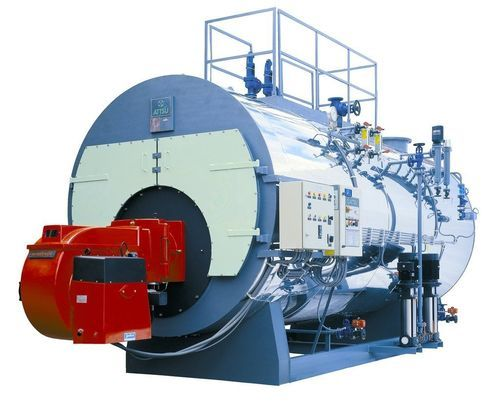Commercial boilers are large-scale heating systems that burn combustible fuels to provide hot water or steam for commercial and industrial applications. As the heated water or steam circulates, radiators or other types of heaters provide a warm and comfortable environment for staff, clients, or customers. They are also used to provide hot water or power certain types of machinery. In this post, we’ll discuss the various boiler parts one by one.
The most common type of fuel for commercial boilers is natural gas, but oil, biofuel, and electric coils can also be used.
A Commercial Boiler’s Different Components
Commercial boilers are used in a wide range of industries, including schools, hospitals, hotels, and factories. They are designed to provide heat or hot water on a large scale and are typically much more complex than residential boilers. Here, we’ll discuss how they work together to heat water and provide heat to a building.
Burner
The burner is the component of the boiler that is responsible for creating the flame that heats the water. Generally, a metal tube is connected to a gas or oil supply, and it is ignited by an electric spark or pilot light. The burner is designed to provide a steady, controlled flame that heats the water to the desired temperature.
Combustion chamber
The combustion chamber is the boiler part where the burner creates the flame. It is typically a large, insulated chamber that is designed to contain the heat and prevent it from escaping into the surrounding area. The combustion chamber is also designed to mix the air and fuel in the proper ratio to achieve maximum combustion efficiency.
Heat exchanger
One of the boiler parts transfers the heat from the combustion chamber to the water. Typically, a series of tubes or coils are arranged in a specific pattern to maximize the transfer of heat. As the water flows through the heat exchanger, it absorbs the heat from the combustion gases, and the temperature of the water increases.
Pump
The main function of the pump in the boiler is to circulate the water through the system. It is an electric pump that is usually located near the boiler and is connected to a series of pipes that distribute the water throughout the building. The pump is designed to maintain a constant flow of water through the system, which ensures that the heat is distributed evenly and efficiently.
Controls
The controls are one of the parts of the boiler that are responsible for regulating the temperature and pressure of the system. Electronic devices are connected to sensors located throughout the boiler and the building. The controls are designed to monitor the temperature of the water; adjust the operation of the burner and pump as needed to maintain a consistent temperature & pressure.
A commercial boiler is a complex piece of equipment that consists of several main components. These components work together to heat water and provide warmth to a building. By understanding how these components work, you can better understand how your boiler operates and how to maintain it for optimal performance and efficiency.
Wrap it Up
To ensure that your boiler is running efficiently and safely, it is essential to arrange for regular maintenance checks for the boiler parts at least once a year. This will help to ensure that your boiler functions optimally. You should also regularly clean the boiler and its firebox to get the most out of the system. “If you notice any damage or debris, it is important to address it immediately, as it could lead to further damage if left unchecked.”

